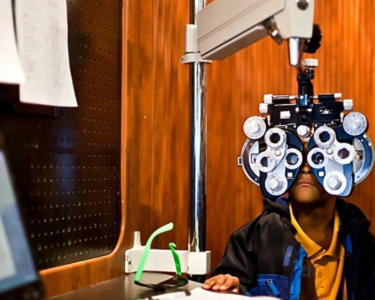Continuous Positive Airway Pressure (CPAP) therapy is a well-known treatment for obstructive sleep apnea (OSA), a condition where people have trouble breathing while they sleep. But CPAP therapy is not just for sleep problems. It also helps manage other lung and breathing diseases. In this blog, we’ll explain how CPAP therapy can help people with conditions like chronic obstructive pulmonary disease (COPD), asthma, and hypoventilation syndrome. We’ll also look at how this treatment can make life better for those who have these breathing issues. At ROYAL MEDICAL & EQUIPMENT TRADING, we offer a wide range of CPAP machines and accessories designed to provide effective relief for respiratory conditions.
Exploring the Role of CPAP in Treating Respiratory Diseases
CPAP (Continuous Positive Airway Pressure) therapy is well-known for treating obstructive sleep apnea, but it also plays an important role in managing various respiratory diseases. By delivering a steady flow of air pressure, CPAP keeps the airways open, making it easier for patients to breathe. This is especially helpful for those with conditions that cause airway constriction or blockage.
Here’s how CPAP helps with specific diseases:
- COPD (Chronic Obstructive Pulmonary Disease)
CPAP helps people with COPD by improving oxygen levels, reducing symptoms, and helping them sleep better. - Asthma
CPAP can make it easier for people with asthma to breathe at night by keeping their airways open, which reduces symptoms. - Hypoventilation Syndrome
CPAP helps people with this condition breathe better by keeping their airways open and improving oxygen flow.
How CPAP Machines Help
CPAP (Continuous Positive Airway Pressure) machines help people with breathing problems by providing a constant flow of air pressure. This air keeps the airways open, making it easier to breathe, especially while sleeping.
Here’s how CPAP machines work:
- Keeps Airways Open
The machine blows a steady stream of air into your nose or mouth through a mask. This helps keep your airways from closing or getting blocked. - Improves Oxygen Levels
By keeping the airways open, CPAP machines help more oxygen reach your lungs, improving your overall breathing. - Reduces Breathing Problems
CPAP machines reduce symptoms like shortness of breath, wheezing, and nighttime breathing issues, especially in people with conditions like sleep apnea, COPD, and asthma.
How to Use a CPAP Machine
Using a CPAP (Continuous Positive Airway Pressure) machine is simple and can greatly improve your breathing and sleep. Here’s a step-by-step guide:
- Consult a Doctor
Before starting, talk to your doctor. They will decide the right settings for your machine based on your condition. - Choose the Right Mask
Pick a mask that fits comfortably over your nose or mouth. A proper fit ensures the air flows correctly. - Set Up the Machine
Follow your doctor’s advice to adjust the settings on your CPAP machine. These settings control the air pressure. - Wear the Mask Every Night
For the best results, use the CPAP machine every night as recommended by your doctor. Consistency is key for improving your breathing and sleep. - Clean the Equipment Regularly
Clean the mask, hose, and machine regularly to ensure it works well and stays hygienic.
By following these simple steps, you can use your CPAP machine effectively and enjoy better breathing and sleep quality.
Benefits of Using CPAP for Respiratory Diseases
CPAP (Continuous Positive Airway Pressure) therapy offers many benefits for people with respiratory diseases. Here’s how it can help:
- Improved Oxygen Levels
CPAP keeps the airways open, allowing more oxygen to reach your lungs, which helps you breathe better. - Reduced Symptoms
It reduces symptoms like shortness of breath, wheezing, and nighttime breathing issues for conditions like COPD, asthma, and hypoventilation syndrome. - Better Sleep Quality
By improving breathing during sleep, CPAP helps you sleep more peacefully without frequent interruptions. - Enhanced Quality of Life
With better breathing and improved sleep, CPAP therapy boosts your energy levels and overall daily functioning. - Prevents Health Complications
Using CPAP consistently can prevent the worsening of respiratory conditions and reduce the risk of more serious problems.
Conclusion
CPAP therapy is a powerful tool for managing respiratory diseases like COPD, asthma, and hypoventilation syndrome. By keeping the airways open and improving oxygen flow, CPAP reduces symptoms such as shortness of breath and helps people sleep better. This leads to improved overall health, energy levels, and quality of life. If you or a loved one is struggling with breathing problems, investing in a CPAP machine can make a significant difference.



